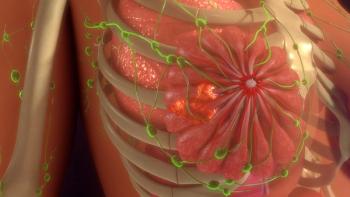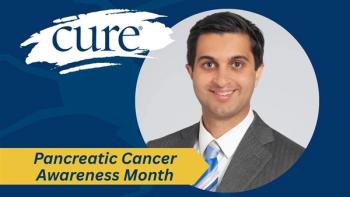
The Top 10 Most Popular CURE® Stories of 2020
Here are the top 10 stories from CURE® in 2020.
From using the lessons learned from cancer to cope with the stress of a pandemic, to self-advocacy and exploration, here’s a look back at the top 10 most popular CURE® stories of 2020:
10. Dealing With the Threat of Coronavirus as a Cancer Survivor
In this piece written back in March, CURE® contributor Laura Yeager talks about how, having lived with the possibility of early death as a two-time cancer patient, she is used to the coronavirus threat and all that it entails. “Having and ‘beating’ cancer has made me unafraid of other health threats,” she says.
9. Taking On The Extraordinary After Struggling With Early Breast Cancer
On a solo 10,000 mile, 25-state road trip with her emotional support cat, Cookie, Patrizza E. Jimenez examines what she learned from her experience with high-grade ductal carcinoma in situ. “I am getting stronger physically day by day, not only helping myself but finding a purpose in helping others by sharing the story of my journey. I do have a reason to live life fully as if there is no tomorrow.”
8. Finding Your Tribe After a Cancer Diagnosis
Cancer can feel lonely and isolated, but through the community, a person touched by the disease can enjoy camaraderie and support, as breast cancer survivor Bonnie Annis learned in this piece from January.
7. How COVID-19 Affects Patients with Cancer
As the new coronavirus (COVID-19) began its spread across the world in March, we took a closer look at how experts were working together to determine how it affects patients with cancer with this story.
6. Appendix Cancer: An Elusive Diagnosis
Often uncovered by accident, appendiceal cancers trigger few symptoms until they’re advanced and can be difficult to detect and treat. Learn more about it from experts and patients who have experienced it firsthand in this feature from our Rare Cancers Special Issue.
5. Dying to Talk
Discussing the possibility of dying is an unfortunate reality for many patients with cancer and their loved ones, but it isn't a talk that should be avoided. In this piece written by CURE® contributor and pancreatic cancer survivor William Ramshaw, learn how it can lead to more healing and understanding.
4. Refine and Retry, Getting Ovarian Cancer Treatment Right for Patients
One of the biggest challenges in ovarian cancer involves early detection, as it often presents with vague symptoms that can be overlooked not only by a patient but also by health care providers. Here, CURE®’s Editor-in-Chief, Dr. Debu Tripathy, weighs in on how the treatment and detection landscape needs to be refined to help patients with ovarian cancer.
3. Early Evidence Shows Fasting, Keto Diet May Make Chemo and Some Other Cancer Treatments More Effective and Easier to Tolerate
In this feature from our Fall 2020 issue, we take a look at early evidence that has found fasting, restricting calorie consumption or following the ketogenic diet could make chemotherapy and some other cancer treatments more effective and easier to tolerate.
2. Do You Understand Your Diagnosis?
Health literacy is important for any patient with cancer trying to understand their diagnosis, and they need help from their care team to gain that. In this piece written before
1. With Rare Cancers, Progress Starts with the Patients
Some diagnoses are straightforward; others can take months or even years to pinpoint. That is why it is crucial for patients who know that something is not right to continue to follow up with their care team or seek out specialists. In our top story of the year, CURE® Chairman, Mike Hennessy Sr. examines how progress is happening in the rare cancer treatment landscape thanks to patients advocating for their care.





